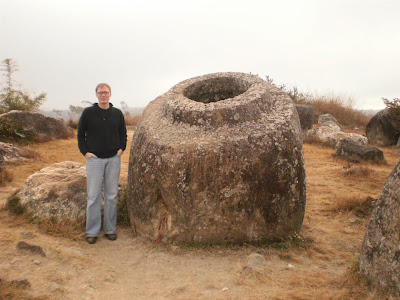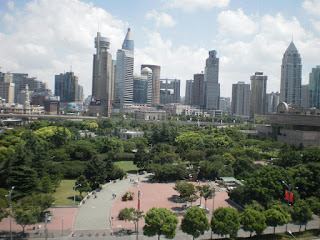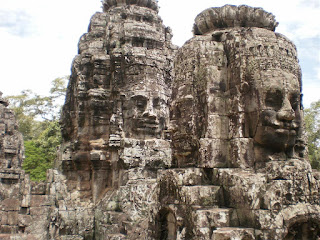Vietnam's long S-shape is caused partly by the natural boundary of lush mountain ranges along its borders. And although the rates of new development (and deforestation) are rapid in those areas, a number of national parks and biosphere reserves have been set up. For two March weekends, I traveled to two very different parks that the guidebooks hardly mention, but which I can barely stop talking about.
Click here to see 36 photos from Pu Mat in Nghe An (some taken by C.), and
click here to see about 36 photos from Phong Nha Ke Bang (some taken by D&N).
 Pu Mat National Park
Pu Mat National ParkThe motorbike ride from my friend's family's home in coastal Nghe An province up Highway 7 is easy-going, with ducks, cows, rice paddies, and rivers giving way to gentle karst-formed hills. Even though the visitors center in Con Cuong told me I needed two days' prior notice to visit the virgin rain forest and ethnic minority villages deep inside the park, they also told me I'd need three days of hiking to get there. With just the weekend, I was satisfied to explore the "buffer zone" between highway 7 and the park. We met only park rangers on the bamboo-tree-lined road to the Khe Kem waterfalls, shrouded in mist, and farmers with large sugarcane knives hanging from their belts would smile and point the way to the springs (no sign on the road) that bubble up from a pond at the base of a hill, with current regular enough to turn several irrigation waterwheels. Sunday afternoon, when we stopped for lunch along the small road leading through villages and flooded fields, the sun came out and the frogs started croaking loud enough to echo off the houses. Back at the beach/harbor town of Dien Chau before dark, we went to the beach and had a dinner of steamed crabs and snails before the bus ride back to Hanoi.
 Phong Nha Ke Bang National Park
Phong Nha Ke Bang National Park
Unlike Pu Mat, which many Hanoians haven't heard of, Phong Nha Ke Bang National Park is a well-known UNESCO World Heritage site, mostly for its
National-Geographic-featured world-record caves. We were outfitted with trekking bikes and kayaks by the friendly folks at
Rustic Chay Lap, and spent the first afternoon using the Ho Chi Minh Highway as our
bike trail, stopping at another spring that starts a river out of nowhere, and biking through steep karst hills covered in green to reach Thien Duong (Paradise) Cave, a breathtaking cavern with well-illuminated formations along 1000 meters (the other 30 km are off limits for now).

The bike ride back to
Chay Lap was marked by an
especially large full moon and bats skimming awfully close to catch bugs. The next day, we explored the powder-blue waterways
by kayak, with men and women fishing, water buffalo cooling off, and children playing. Napping to the sounds of chickens scratching in the yard, eating oranges we picked ourselves, sleeping in traditional wood houses at the foot of giant hills -- who would ever want to leave?






























